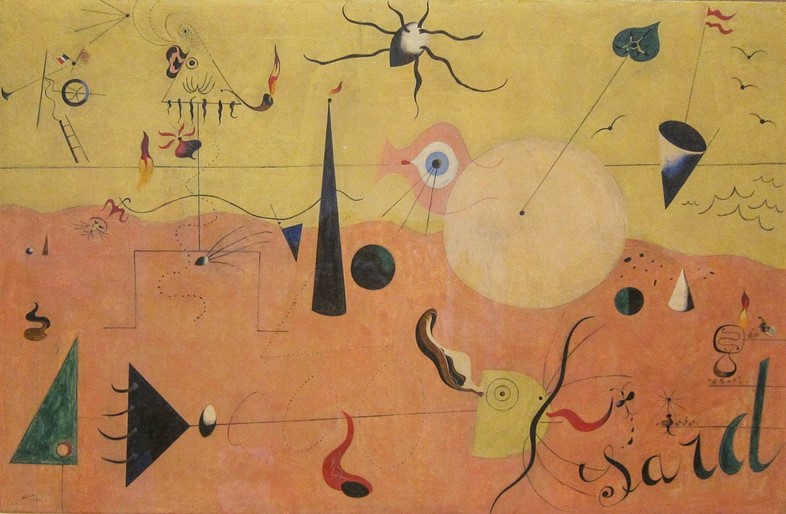As a 1958 conversation with the artist is reprinted for the first time in 50 years, we look at ten Joan Miró’s most interesting musings
Spanish artist Joan Miró defied categorisation over the course of his 90 years. Miró worked in painting, sculpture, ceramics and tapestry (although he initially studied business) and consistently bucked artistic trends in favour of pursuing his idiosyncratic style, often using his art to respond to the contemporary political climate of the 20th century. Indeed, a 2008 Museum of Modern Art exhibition Painting and Anti-Painting explored Miró’s entirely unique approach to the art form, taking as its central focus his famed statement “I want to assassinate painting” and looking at a decade of his “savage” and grotesquely enthralling works.
A proud native of Catalonia, many of Miró’s works take the region as their subject, from landscapes to dream-like, symbolic depictions of Catalan people. His work is largely associated with the Surrealist movement but, in order to maintain a freedom to experiment with style and practice, Miró eschewed subscribing officially to any particular artistic movement; thus, elements of Surrealism, Dada, Magical Realism, Cubism and Fauvism can be identified in varying degrees in his work. Miró’s style also proved influential to later Abstract Expressionist artists, such as Gorky, Pollock and Rothko.
A 1958 conversation between Miró and critic Yvon Taillandier has been republished by Princeton Architectural Press in Joan Miró: I Work Like a Gardener. The title is taken from the interview, in which Miró reflects on his creative process and his style: “I work like a gardener or a winemaker,” he says. “Things come slowly. My vocabulary of forms, for example, I didn’t discover it all at once. It formed itself almost in spite of me.” I Work Like a Gardener is revelatory of Miró’s philosophy when it came to art – here, alongside some of his other notable words, we present ten fascinating musings from the artist.

- “I try to apply colours like words that shape poems, like notes that shape music.”
- “The works must be conceived with fire in the soul but executed with clinical coolness.”
- “If there’s anything humorous about my painting, it’s not been consciously sought. The humor comes, perhaps, from the need I feel to escape the tragic side of my temperament.”
- “Empty spaces, empty horizons, empty plains – everything bare has always greatly impressed me.”
- “When a painting doesn’t satisfy me, I feel physical distress, as if ill, as if my heart isn’t working properly, as if I can’t breathe and am suffocating.”
- “I work for a long time, sometimes years, on the same canvas. But all this time, there are periods, sometimes quite long, when I’m not doing anything with it.”
- “You have to know how to master fire when you work with ceramics.”
- “The unexpected provokes a shock, and that’s something that attracts me.”
- “For me, a picture should be like sparks. It must dazzle like the beauty of a woman or a poem.”
- “An artwork should be fertile. It must give birth to a world.”
Joan Miró: I Work Like a Gardener by Joan Miró, preface by Robert Lubar, is available now, published by Princeton Architectural Press.
